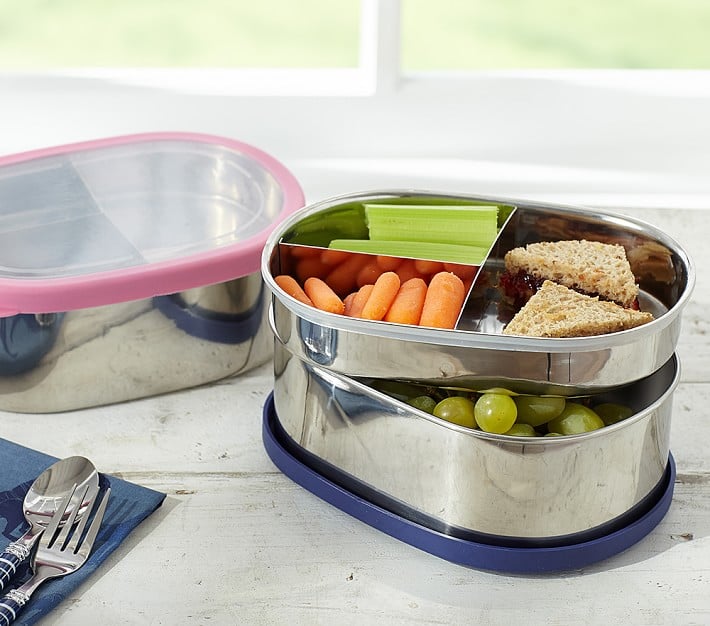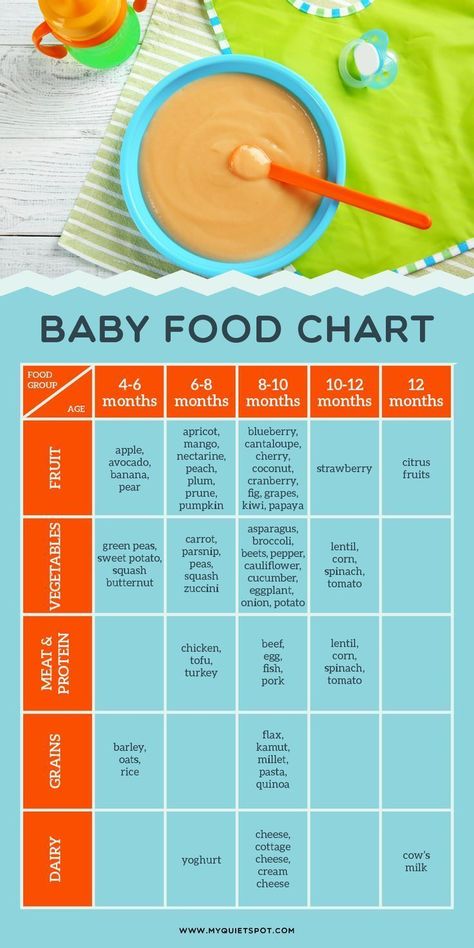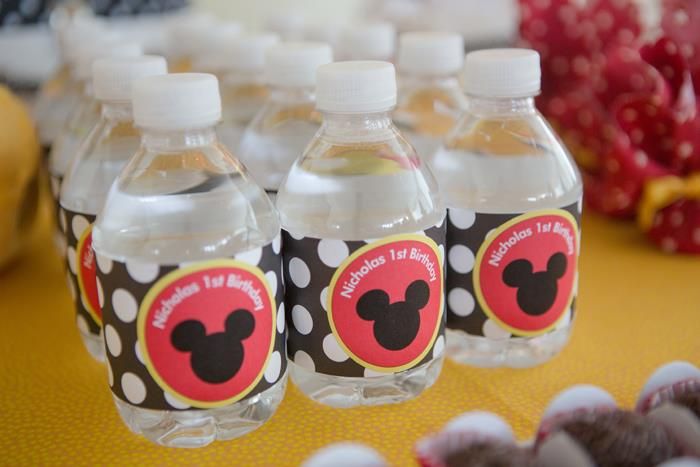Melon puree baby food
Cantaloupe for Baby (and Big Kids)
Learn safe ways to serve cantaloupe to a baby (and to toddlers) with this easy guide. With tips on how to cut cantaloupe easily, which shapes are easiest to eat, and how to choose a ripe cantaloupe.
Cantaloupe for Baby
A ripe cantaloupe is one of my family’s very favorite fruits. My kids even have a phrase for a really good one: “Cantaloupe heaven”. This fruit, which is a great source of hydration and Vitamin C, is a delicious side dish or snack to share with the kids from soon after they start solids.
Because many cantaloupes (and honeydew) can be a little firm, there are some basic guidelines to keep in mind when preparing them for a baby and toddler.
Below, I’ll share how to choose a cantaloupe, how to remove the skin and seeds, a few easy ways to cut them, and how to make a simple cantaloupe puree.
This info works for kids of all ages (and parents!) and is handy to save for peak melon season.
How to Choose a Cantaloupe
When choosing a cantaloupe, regardless of the variety, you want it to feel heavy for its size (which indicates a lot of juice), to have a slight give when you press on the base where the stem was removed, and to smell like a fragrant melon.
If a melon is rock hard and has no fragrance, it is less likely to have delicious flavor. If a melon is really soft and gives a lot when you touch it, it is likely overripe.
The skin of a cantaloupe should be fairly uniform, but sometimes there is slight discoloration on the spot it was sitting on the ground, which is fine.
How to Cut Cantaloupe Step-by-Step
This is how I prefer to cut a melon like a cantaloupe to share with the kids.
- Use a knife to cut the melon in half. This exposes the seeds. Use a spoon to remove the seeds and discard.
- Use a small knife to remove the skin. I hold the melon cut side down in one hand and use the other hand to gently remove the skin working around in a circle. You can also place the melon cut-side-down on the counter and remove the skin.
- Cut the half in half, then into slices.
- Or, you can use a melon baller to make round shapes for older kids. (You don’t have to peel it to use this method, though know it’s often hard to get all of the melon off the skin with a melon baller.

From there, you can slice the cantaloupe into matchsticks or into small diced pieces as you like.
Can a baby eat cantaloupe?
Yes, here’s how I prefer to offer this type of melon to kids according to their age:
- 6 months: Offer a large slice for baby baby-led weaning style. Make sure it’s ripe and not firm, to reduce the risk of choking. You can also blend fresh cantaloupe into a simple puree.
- 9 months: Offer small diced pieces as a finger food. (Again, make sure the melon is ripe and very soft.)
- 12+ months: Offer matchstick shape pieces of cantaloupe.
- 18+ months: Offer thicker slices for the toddler to take bites from.
How do I prepare cantaloupe for my baby?
You can offer a thick slice, cut it into small pieces, or puree it into a sort of juice, depending on the age of the child and your preference.
How do I give my 7-month-old melon?
For this age, you can offer a large slice for baby to gnaw on baby-led weaning. Make sure it’s ripe and not too firm, which reduces the risk of choking.
Make sure it’s ripe and not too firm, which reduces the risk of choking.
You can also blend fresh, ripe cantaloupe into a simple puree by adding pieces to a blender and blending smooth. Then you can offer it on a baby spoon or in a reusable pouch.
Can babies eat pureed cantaloupe?
Sure, pureeing ripe cantaloupe is an easy baby food option that can be served with a spoon or in a reusable pouch.
Best Tips for Success
- Be sure to start with a ripe, soft melon to reduce the risk of choking.
- Look for a melon that gives slightly at the base and smells fragrant.
- Offer cantaloupe to a 6-month-old baby as either a thick slice for baby-led weaning or as a puree.
- Offer cantaloupe to a 9-month-old baby, as long as the melon is very ripe and soft, diced into very small pieces.
- Offer it as matchstick-size pieces to a 12+ month baby, as long as the melon is very ripe and soft.
- Offer larger pieces, again as long as soft and ripe, to toddlers 18+ months.

- Save melon balls for older kids to reduce the risk of choking. They are a fun option for kids over about age 3 or 4.
- You can add fresh chunks of cantaloupe to a blender and blend smooth to make a fresh puree.
Related Recipes
I’d love to hear your feedback on this post, so please comment and rate it below!
Prep Time 5 minutes
Total Time 5 minutes
Author Amy Palanjian
Cuisine American
Course Snack
Calories 23kcal
Servings 8
- ▢ 1 cantaloupe
Cantaloupe Puree
Cut the melon in half. Scoop out the seeds with a spoon and discard .Use a knife to remove the skin. Roughly chop at least 2 cups of the melon. (You can eat the rest yourself or store it in the fridge for future use.) Add melon to a blender and blend smooth. Serve with a spoon or in a reusable pouch.
Sliced and Diced Cantaloupe
Cut the melon in half. Scoop out the seeds with a spoon and discard.
 Use a knife to remove the skin. 6+ months: Serve a large slice for baby-led weaning. 9+ months: Serve the fruit diced very small. 12+ months: Serve cut into thin matchsticks. 18+ months: Serve as thicker slices.
Use a knife to remove the skin. 6+ months: Serve a large slice for baby-led weaning. 9+ months: Serve the fruit diced very small. 12+ months: Serve cut into thin matchsticks. 18+ months: Serve as thicker slices.
Storage Containers
Reusable Pouch
- Be sure to start with a ripe, soft melon to reduce the risk of choking.
- Look for a melon that gives slightly at the base and smells fragrant.
- Offer cantaloupe to a 6-month-old baby as either a thick slice for baby-led weaning or as a puree.
- Offer cantaloupe to a 9-month-old baby diced into very small pieces, as long as the melon is very ripe and soft.
- Offer it to a 12+ month baby, as long as the melon is very ripe and soft, as matchstick pieces.
- Offer larger pieces, again as long as soft and ripe, to toddlers 18+ months.
- You can add fresh chunks of cantaloupe to a blender and blend smooth to make a fresh puree.
- Store leftover melon or puree in an airtight container in the fridge for up to 5 days.

Serving: 0.25cup, Calories: 23kcal, Carbohydrates: 6g, Protein: 1g, Fat: 1g, Saturated Fat: 1g, Polyunsaturated Fat: 1g, Monounsaturated Fat: 1g, Sodium: 21mg, Potassium: 108mg, Fiber: 1g, Sugar: 5g, Vitamin A: 2334IU, Vitamin C: 8mg, Calcium: 6mg, Iron: 1mg
Tried this recipe?Rate in the comments and tag @yummytoddlerfood on IG!
How to Serve Cantaloupe to Baby
Learn how to prepare cantaloupe for your baby in 8 delicious and easy ways! As a deliciously sweet fruit, Cantaloupe and all other melons, can be served to babies 6 months and up. Serve them as a baby food puree, as a solid for the finger food stage or for baby-led weaning.
Medically reviewed and co-written by Jamie Johnson, Registered Dietitian Nutritionist (RDN), and Lauren Braaten, Pediatric Occupational Therapist (OT).
Cantaloupe for Baby
Looking to serve cantaloupe 🍈 to your baby, but not sure how?
Then this guide is for you!
In this guide, we will go over all the information you need in order to serve cantaloupe to your baby as a puree, as a finger food, or for baby-led weaning. Below you will learn the benefits of cantaloupe for our baby, FAQs, how to select and store cantaloupe, as well as 8 delicious and easy recipes for you to try.
Below you will learn the benefits of cantaloupe for our baby, FAQs, how to select and store cantaloupe, as well as 8 delicious and easy recipes for you to try.
First time making homemade baby food? Then, I would suggest that you start by reading my very in-depth Guide on how to Make Homemade Baby Food – which goes over all the important information such as the best cooking tools to have on hand, safe storage, how to know when baby is ready for solids, how to introduce purees, the best first foods for baby, and more! If you are doing Baby-Led Weaning, then be sure to check out my Complete Guide to Baby-Led Weaning – which covers what exactly is baby-led weaning, to every parent’s concern of baby-led weaning and choking, this guide goes over it all. I will also share how to know when baby is ready for BLW, the top 10 best first foods, a helpful sample blw feeding schedule, helpful tools to have on hand, and much much more!
Want more information? Then make sure to check out my best-selling cookbook for even more information and recipes!
Cantaloupe for Baby Video
Watch this video to get some ideas on how to serve melon to your baby!
Reasons to Love Cantaloupe for Baby
- delicious baby food purees – 6+ months
- great for baby-led weaning – 6+ months
- also great for the finger food stage – 9+ months
- full of essential nutrients for baby
- different ways for baby to eat – spoon-fed or self-feed
- easy to make – no cooking required
- recipes are great for Honeydew, Cantaloupe and other varieties of melons
Nutritional Benefits of Cantaloupe
Melons are filled with a wide variety of nutrients for your baby;
- Contain potassium, an important electrolyte for maintaining fluid balance, muscle contractions and normal heartbeat.
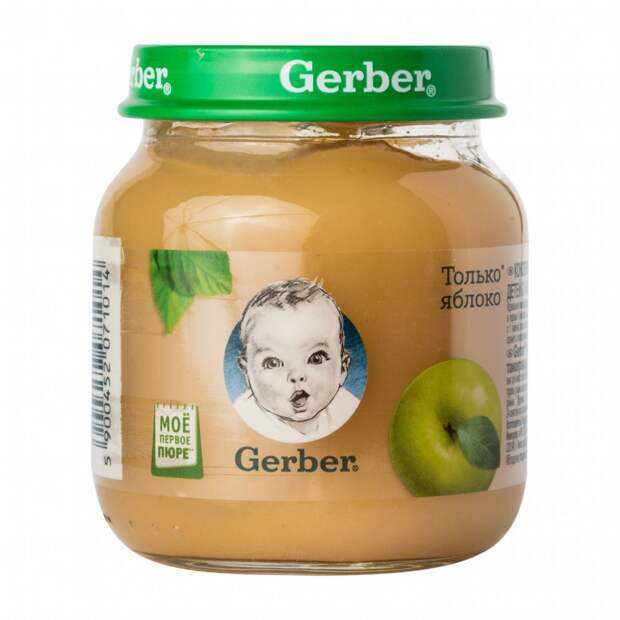
- High in vitamin C, which supports the immune system and helps with iron absorption.
- Cantaloupe is an excellent source of vitamin A, which is necessary for healthy eyes and skin.
- High water content helps keep your baby hydrated and relieves constipation.
How to Pick a Ripe Cantaloupe
Here’s how to pick a cantaloupe that’s perfectly ripe and ready to enjoy:
- Weight: pick up the melon and hold it in your hands. If it feels heavy for its size, you have a cantaloupe that’s close to ripe.
- Touch: a ripe cantaloupe should have the right level of firmness. It shouldn’t be as hard as a watermelon, although too soft and it may be past its prime.
- Color: if the rind on your cantaloupe has a greenish hue, it likely needs a couple more days to ripen fully. But if the rind has a beige, pale yellow hue, it’s likely ripe and ready for eating.
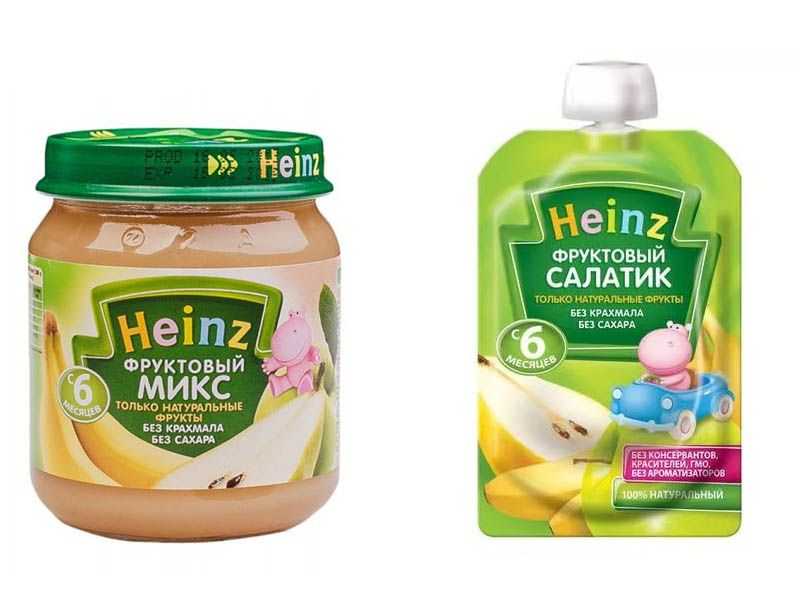
- Sound: give the melon a little shake. If it’s ripe, you should hear all those little seeds making a rattle.
- Scent: give it a quick sniff. Ripe cantaloupes should have a sweet, musky smell. If you don’t smell anything, it’s likely not ripe yet.
How to Store a Melon: You can store uncut, whole cantaloupe at room temperature for a couple of days. If you aren’t ready to cut your cantaloupe, you can store it in the fridge for about 5 days. If your cantaloupe isn’t ripe enough, you can keep it in a closed paper bag to accelerate the process.
Frequently Asked Questions
When can I introduce melon to my baby?
Whether you’re starting your baby on purees or are doing baby-led weaning, cantaloupe is a refreshing and enjoyable first food for your baby! When a baby can start on solids is determined by their own rate of development, which generally comes between 4-6 months of age for purees and or after 6 months for baby-led weaning. Some of the developmental milestones your baby needs to reach in order to start on solids include: if your baby has solid control of their head and neck, if your baby has doubled in weight, and if your baby is reaching for or opening their mouth when you eat (see my guide here). Before you start your baby’s feeding journey, you should consult with your pediatrician to make sure your child is developmentally ready.
Some of the developmental milestones your baby needs to reach in order to start on solids include: if your baby has solid control of their head and neck, if your baby has doubled in weight, and if your baby is reaching for or opening their mouth when you eat (see my guide here). Before you start your baby’s feeding journey, you should consult with your pediatrician to make sure your child is developmentally ready.
Is melon a choking hazard?
Yes, melon can be a choking hazard, especially when served in the form of melon balls. Always serve melon in an age-appropriate way.
Is melon a common allergen?
No, melon is not a common allergen; however, as with all foods, start with a small portion and be aware of any signs that may be an allergic reaction after introducing it.
Does melon cause constipation for babies?
Melon does not usually cause constipation in babies. In fact, due to its high water content, it can actually help relieve constipation.
In fact, due to its high water content, it can actually help relieve constipation.
Types of Melons
There are actually many different types of melons, including Winter Melon, Banana Melon, Canary Melon, and Galia Melon but the most common ones in the States are:
- Watermelon
- Honeydew
- Cantaloupe
These tools will make it a lot easier for you to serve melon to your baby. For more of my favorite kitchen tools, make sure to check out my shop.
- Blender or Food Processor
- Storage Containers for Fridge
- highchair
- bib with catch pocket
- Baby Bowls
- Suction Baby Plates
- Baby Spoons
- Freezer Storage Tray
- Gootensil
- Saucepan
- Baking Sheet
There are several different ways to prepare melon for your baby! You can make it into a smooth puree, a combination puree, a chunky puree for stage three, mashed and spread on toast or whole for baby-led weaning or a finger food. Here are 8 of my favorite ways to serve cantaloupe to baby:
Here are 8 of my favorite ways to serve cantaloupe to baby:
- Basic Cantaloupe Puree
- Cantaloupe Banana Yogurt Puree
- Cantaloupe Cauliflower Mint Puree
- Chunky Cantaloupe Tofu Puree with Mint
- Cantaloupe for Baby-Led Weaning or Finger Foods: thin strips, cut into small pieces or in a small wedge.
- Chunky Cantaloupe Tofu Puree with Mint
- Cantaloupe Lemon Popsicles for Baby
- Cantaloupe Smoothie
Basic Cantaloupe Puree
This simple, yet delicious stage one puree takes all of 60 seconds to make!
Instructions (for the full recipe, see recipe card below): blend ripe pieces of cantaloupe until smooth, pour into a bowl and serve. Due to cantaloupes’ high water content, this puree will be on the thinner side.
More Ways to Serve: you can serve this Basic Cantaloupe Puree with yogurt, mixed with apple, pear, or sweet potato puree, or swirled into oatmeal, quinoa, cottage cheese or ricotta.
Cantaloupe Banana Yogurt Puree
This super creamy and thick cantaloupe puree is another easy puree that can be made in minutes. It’s great for spoon feeding to your baby or served in a reusable pouch.
Instructions (for the full recipe, see recipe card below): place cantaloupe chunks, banana and yogurt into a blender and puree for 30-60 seconds or until smooth. Pour into a baby bowl and serve.
Cantaloupe Cauliflower with Mint Puree
A tasty way to incorporate cauliflower into a baby’s diet! Gently steamed cauliflower is paired with naturally sweetened cantaloupe and rounded out with fresh mint. You can also use basil or chives in place of the mint.
Instructions (for the full recipe, see recipe card below): steam some cauliflower until fork tender. Transfer to a blender, add cantaloupe and mint, and puree until smooth.
Transfer to a blender, add cantaloupe and mint, and puree until smooth.
Chunky Cantaloupe Tofu and Mint
Cantaloupe and tofu make a great team! Here we are roughly chopping both and pairing them with a sprinkle of chopped mint for an easy finger food for baby. You can use raw tofu or cook it lightly in a skillet before chopping and adding to the cantaloupe.
Instructions (for the full recipe, see recipe card below): on a cutting board, roughly chop some cantaloupe and sprouted tofu. Mix together and then sprinkle on some chopped mint or basil to the top.
Cantaloupe for Self Feeding
Cantaloupe is a good food for your baby to self-feed, whether for baby-led weaning, which happens around 6 months of age, or during the finger foods stage at 9 months.
Large Stick – 2 fingers wide (6+ months): great for babies 6+ months or just starting on solid foods. It’s best to start your baby with a bigger piece of cantaloupe, at least 2 fingers wide.
It’s best to start your baby with a bigger piece of cantaloupe, at least 2 fingers wide.
Chopped or Wedge (9+ months): when your baby’s pincer grasp has developed, you can serve chopped bite-size pieces of cantaloupe or a wedge to your baby.
Wedges or Smaller Sticks (12+ months): as your baby’s eating skills advance you can serve them wedges of cantaloupe so they can learn how to take a bite as well as smaller sticks.
Cantaloupe Lemon Popsicles
Want a fun way to serve cantaloupe to your baby on a hot day? Then try these Cantaloupe Popsicles! Made with only 4 ingredients; these popsicles will be a fun (if not a little messy) way for your baby to explore this popular fruit!
Instructions (for the full recipe, see recipe card below): blend cantaloupe, yogurt, lemon juice and sweetener (optional). Pour into small baby-friendly popsicle molds and freeze. Once frozen, take a popsicle out of the mold and hand it to your baby.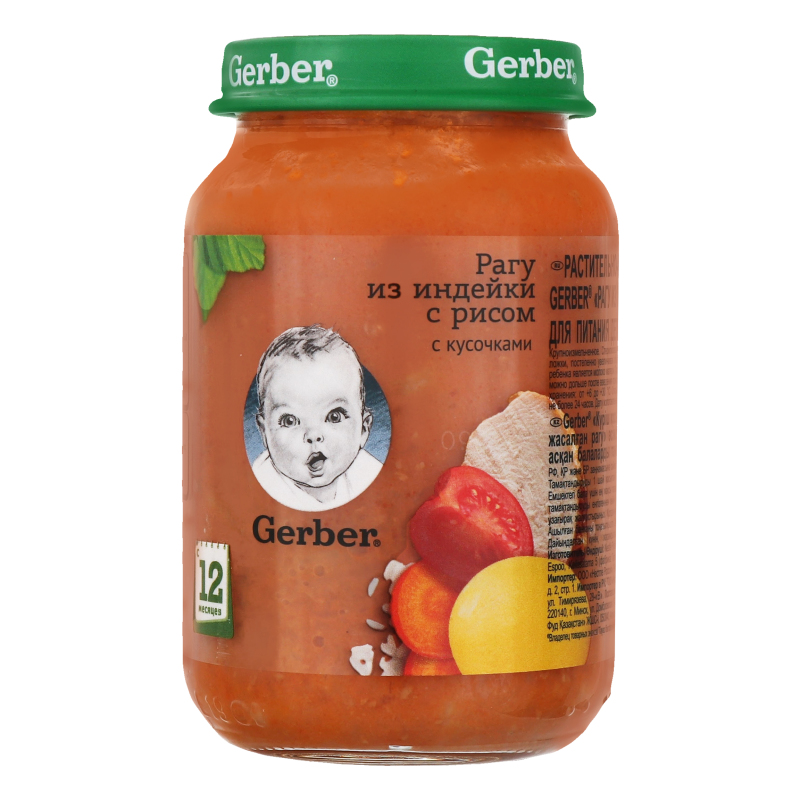
Cantaloupe Smoothie
Made with 6 simple ingredients – including one veggie – this smoothie is easy to make and even easier to drink! Great for 9+ months!
Instructions (for the full recipe, see recipe card below): place cantaloupe, frozen mango, frozen banana, frozen cauliflower, chia seeds and milk into a blender and puree until creamy. Pour into a baby-safe cup and serve.
Tips for Feeding Melon to Baby
- Buy whole melon instead of pre-cut and always wash before cutting to reduce the risk of salmonella.
- Pick a cantaloupe – by choosing a firm and symmetrical melon that is free from bumps, cuts, and dents.It should feel heavy in your hands and have a sweet scent.
- Wash First: Make sure you wash and dry your watermelon for cutting into it.
Or watch the shortened video here.
Basic Cantaloupe Puree
- 2 cups cantaloupe, peeled, deseeded and roughly chopped
Cantaloupe Banana Yogurt Puree
- 1 cup cantaloupe, peeled, deseeded and roughly chopped
- 2 medium bananas, ripe
- 1/2 cup plain whole milk yogurt
Cantaloupe Cauliflower Mint Puree
- 1 cup cantaloupe, peeled, deseeded and roughly chopped
- 2 cups cauliflower
- 2 mint leaves
Chunky Cantaloupe Tofu and Mint
- 1/4 cup cantaloupe chunks
- 1/4 cup sprouted tofu
- 2 mint leaves, finely chopped
Cantaloupe for Self Feeding
- 1 slice cantaloupe
Canaloupe Lemon Baby Popsicles
- 2 cups cantaloupe
- 3/4 cup plain yogurt
- 2 tbsp fresh lemon juice
- 2-3 tbsp agave nectar or maple syrup (optional)
- 1 cup strawberries (Optional)
Cantaloupe Smoothie
- 1 cup cantaloupe
- 1/2 cup frozen mango
- 1 medium banana, preferable frozen
- 1/4 cup frozen caulilfower florets or califlower rice
- 1/2 tsp chia seeds (optional)
- 2-3 tbsp honey (over 1 year), maple syrup or agave nectar (optiona)
- 3/4 cup milk, regular, almond, soy, cashew, oat, etc.

Basic Cantaloupe Puree
Place the cantaloupe into a blender.
Puree on medium speed for 10-20 seconds or until smooth.
Serve and enjoy!
Cantaloupe Banana Yogurt Puree
Place the banana, cantaloupe and yogurt into a blender.
Puree for 30-60 seconds or until smooth.
Serve and enjoy!
Cantaloupe Cauliflower Mint Puree
In a medium saucepan, bring 2″ of water to a boil over medium heat. Place the cauliflower into a steamer basket, cover and cook for 9-11 minutes or until tender. Reserve steamer water. Let cool slightly.
Place the cauliflower, cantaloupe and mint into a blender and puree for 1-2 minutes on medium-high or until smooth.
Serve and enjoy!
Chunky Cantaloupe Tofu and Mint
Place cantaloupe and tofu on a cutting board and finely chop into very small pieces.
Transfer the cantaloupe and tofu to a small bowl and add in mint, mix until incorporated.

Serve and enjoy!
Cantaloupe for Self Feeding
Serve to your baby in thick sticks, chopped, as a wedge, on the rind, or in small sticks depending on your baby's age (see graph).
Cantaloupe Lemon Popsicle
Place the cantaloupe, yogurt, lemon juice, sweetener (if using), and the strawberries (if using) into a blender and blend on medium-high speed puree the cantaloupe mixture for 1-2 minutes or until the mixture is completely smooth.
Using your favorite popsicle mold, pour the cantaloupe mixture into the molds until the fill line. Place in the popsicle sticks.
Place the popsicle mold into the freezer and let freeze for at least 5 hours but preferably overnight. Once frozen, take a popsicle out of the freezer and take out of the mold. Eat and enjoy.
Creamy Cantaloupe Smoothie
In a blender add in the cantaloupe, mango, banana, cauliflower, chia seeds, honey (over 1 year) and milk.
 Turn the blender on and blend for 1-2 minutes or until completely smooth.
Turn the blender on and blend for 1-2 minutes or until completely smooth.Once blended, pour into a small cup with a lid and serve.
Age: 4-6+ months for puree, 6+ months for baby-led weaning.
Storage: you can store the purees in the fridge for up to 4 days or in the freezer for 4 months. You can store the finger foods in the fridge for up to 3 days.
Yield: the purees will yield you roughly 6-8 ounces of puree, while the finger foods will give you 1-2 servings.
Blender
Freezer Tray
NumNum Pre-Spoon GOOtensils
Bumkins Baby Bowl
Kids Glass Cups
Did you make this recipe?
Tag @babyfoode on Instagram and hashtag it #babyfoode!
Pin <em>Recipe</em> Email <em>a Friend</em>
for babies, step by step recipes with photo
Melon is a plant from the Pumpkin family, which has a lot of useful properties. Sweet and juicy fruit contains a lot of vitamins and other substances necessary for the body. For the winter, you can prepare melon puree, which retains all the useful components. Such a delicacy can be eaten not only by adults, but also by children, including at the first feeding.
Sweet and juicy fruit contains a lot of vitamins and other substances necessary for the body. For the winter, you can prepare melon puree, which retains all the useful components. Such a delicacy can be eaten not only by adults, but also by children, including at the first feeding.
Contents
- Features of preparing melon puree for the winter for babies
- Selection and preparation of ingredients
- Simple recipe for winter melon puree
- Terms and conditions of storage
- Conclusion
Features of preparing melon puree for winter for babies
Supplementary food is gradually introduced at an early age. This applies to any product, including vegetable origin. Melon is allowed to be consumed from 8 months, but only in the form of mashed potatoes. It is also used as an additive to other types of baby food. nine0003 The fruits ripen in August, which is considered the best period for harvesting for the winter
The main feature of making puree is that melon does not have to be the only ingredient. It is the main component, but other fruit plants should also be included.
It is the main component, but other fruit plants should also be included.
Important! To preserve nutrients, the dish is frozen, not canned.
The product must not be given to a child if:
- diabetes mellitus;
- intestinal colic; nine0008
- kidney disease;
- prolonged diarrhoea.
Before using a new product, make sure that there is no allergy. To do this, prepare a mixture of melon and apple pulp. The child is given 2-3 teaspoons, which allows you to make sure that there are no redness on the skin and other symptoms of an allergic reaction.
Selection and preparation of ingredients
To make delicious melon puree for the winter, you need to choose the right fruits. It is best to buy in mid-August, when the ripening period comes. In markets and shops, fruits appear earlier. They are not recommended to be consumed in large quantities due to the possible content of mineral fertilizers in the composition. nine0003
A suitable melon must be:
- whole, not cut into halves or slices;
- with clean, undamaged skin;
- no signs of rot;
- soft.

Another way to make sure the fruit is good is to tap it with the palm of your hand. If the sound is deaf, the melon is ripe.
Optional component can be selected according to your choice. It is advisable to use non-acid fruits or berries as an ingredient. Some fruits contain a large amount of juice, which is why they should not be added to puree, as the consistency will become liquid. nine0003
Pairs well with melon:
- apples;
- peaches;
- banana;
- drain;
- mango.
Pears, apricots and cherries are allowed. It is not advisable to give black and red currants, raspberries to children before 1 year.
The melon is de-seeded before cooking. The fruit is cut in half and the inner cavity is cut out with a spoon. Then it is peeled, washed thoroughly.
Additional ingredients are prepared in the same way. The fruits are washed, cleaned, if necessary, seeds and seeds are removed. nine0003
nine0003
Purees are not cooked, so all ingredients must be clean. To eliminate the risk of harmful bacteria entering, the components can be doused with boiling water and left to drain.
A simple recipe for melon puree for the winter
The delicacy is prepared exclusively from herbal ingredients, without additional preservatives and food additives. Only sugar is added to the puree if it contains acidic components. Otherwise, making a mixture of melon and other fruits and berries is very simple. nine0003
Important! For cooking, you need a blender. You can also use a meat grinder or an auger juicer.
Ingredients:
- melon pulp - 1 kg;
- apples (or other permitted fruits/berries of your choice) - 1 kg;
- sugar - 2-3 tbsp. l.
Preparation:
- Cut the peeled melon into small cubes.
- Grind apples or other used fruits in the same way.
- If pitted berries are included, they can be added whole.
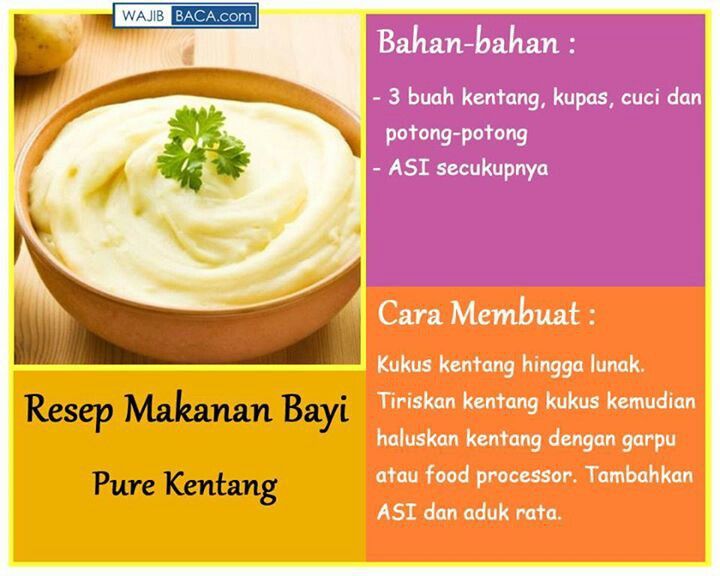 nine0008
nine0008 - Transfer ingredients to a blender.
- Grind.
- Pour sugar into the mixture.
- Blend again with a blender until smooth.
The dish should be put into separate containers. The volume is calculated in such a way as to eat the entire portion at a time.
Can be used:
- small food containers; nine0008
- plastic cups;
- baby bottles;
- sticker bags for freezing berries.
The puree spread in the container is sent to the freezer. The finished mixture is used as an independent treat or added to other dishes.
Methods for preparing melon puree:
Terms and conditions of storage
Fresh fruit puree is kept in the chamber at a temperature of -6 to -12 degrees.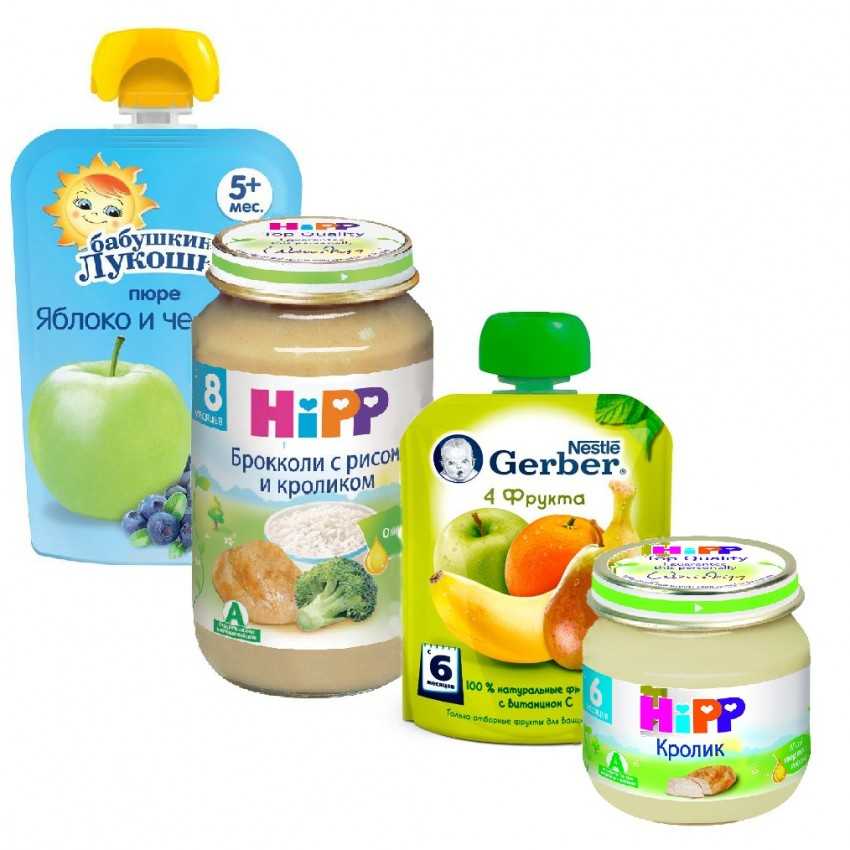 Shelf life 3-6 months. Puree is suitable for consumption for 1 year, but it loses some of its nutrients. nine0003
Shelf life 3-6 months. Puree is suitable for consumption for 1 year, but it loses some of its nutrients. nine0003
Important! Thawed melon puree cannot be refrozen. The product will be unfit for consumption.
The mixture should be defrosted in the refrigerator, at a temperature of +6-8 degrees. Ready-to-eat puree can be stored for no more than three days.
Conclusion
Melon puree is a tasty and healthy delicacy that can be prepared for the winter. It is enough to beat the fruits with a blender and freeze them. This cooking option ensures the safety of mashed potatoes for six months without losing valuable nutrients. In addition to melon, you can add other fruits and berries to make puree even healthier. nine0003
Simple recipe for winter for baby
Content
For the first months or even years after birth, the baby should be fed with mother's milk. However, this does not always work out, and here baby food comes to the rescue, which includes products that are suitable in their properties for the age of the child.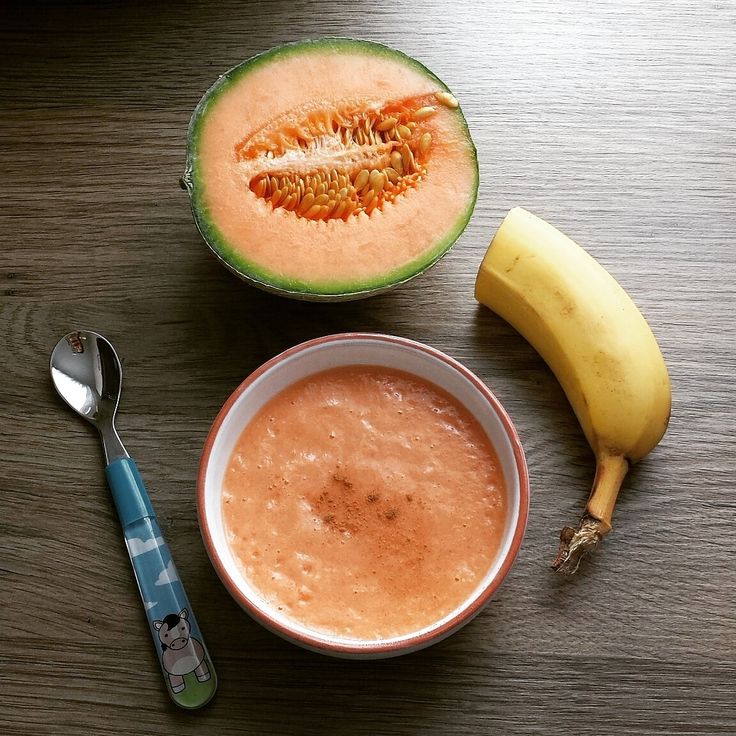 These are artificial mixtures, cow's milk, some types of cereals, vegetables and fruits. It is important to know at what age you can eat baby melon puree and how to cook it properly in order to stock up on a delicious treat for the winter. nine0003
These are artificial mixtures, cow's milk, some types of cereals, vegetables and fruits. It is important to know at what age you can eat baby melon puree and how to cook it properly in order to stock up on a delicious treat for the winter. nine0003
Useful properties of melon puree
Melon is very useful for a growing child's body. It contains a lot of useful nutrients that help the child to form healthy, cheerful and active. Among them are:
- ascorbic acid - strengthens the body's immune forces, fights colds, viruses, pathogenic microorganisms;
- vitamins of group B - help to form a strong nervous system;
- folic acid - prevents the development of anemia, promotes the absorption of iron; nine0008
- vitamin A - strengthens eyesight, is necessary for the full growth and development of the child;
- nicotinic acid (vitamin PP) - increases the efficiency of metabolic processes;
- phosphorus and calcium - necessary for the growth of bones and teeth;
- iodine - supports the functionality of the endocrine system;
- zinc - provides health to hair, nail plates;
- iron - participates in the hematopoietic function, the formation of red cells;
- copper - ensures the transfer of oxygen to the internal organs; nine0008
- cobalt - participates in the formation of the musculoskeletal system, cell renewal, hematopoiesis.

Melon, like corn, contains gold in a form digestible by the body. The element has a positive effect on the functioning of the immune system, helps the body fight viruses and bacteria. The rich composition makes the melon no less useful than a watermelon, and in some respects it significantly surpasses it. The properties of the fruit are also valuable and varied:
- contains a high concentration of natural sugars, which are very quickly absorbed and saturate the body with energy; nine0008
- magnesium helps strengthen the nervous system of easily excitable and restless babies prone to tantrums and whims;
- high content of pectins helps to release the body from accumulated toxins and toxins coming from food, air, water;
- potassium strengthens the heart, serves as a mild diuretic;
- melon seeds can be used as a child-safe dewormer;
- Seed decoction will make baby's hair soft and silky. nine0008
Fiber, which is abundant in melon, has a positive effect on the digestive tract, helps cleanse the intestines, improve the well-being of the child. The rich vitamin composition allows it to be used in therapeutic diets for certain diseases, such as tuberculosis, rheumatism.
The rich vitamin composition allows it to be used in therapeutic diets for certain diseases, such as tuberculosis, rheumatism.
Important! Melon can be given to a child only in the ripening season and must be fully ripe. In such fruits, there are fewer nitrates, which, when ingested, bind to hemoglobin and impede the transfer of oxygen to the tissues. nine0003
Features of preparing melon puree for the winter for babies
Pediatricians recommend introducing melon into the diet after a year. Previously, it is allowed to introduce fruit into baby food if the child has kidney problems. But abroad, melon in the diet of babies can be found from 6-8 months.
Introduce sweet fruit into children's diets gradually. You can not immediately give a melon in its pure form, and even in large quantities. Puree for babies should consist of several ingredients, the main of which should be a vegetable or fruit that is already well known and familiar to the baby. nine0003
For example, applesauce is recommended as one of the first complementary foods. It is low-allergenic, easily digestible, rich in useful substances. In addition, the taste is ideally combined with melon. Therefore, for the first time, it is recommended to make apple-melon puree, feed it to a child and observe if there are any allergic reactions, increased gas formation.
It is low-allergenic, easily digestible, rich in useful substances. In addition, the taste is ideally combined with melon. Therefore, for the first time, it is recommended to make apple-melon puree, feed it to a child and observe if there are any allergic reactions, increased gas formation.
Attention! The first time is better to be content with 0.5-2 teaspoons of puree.
Ingredients for winter melon puree
A caring and frugal mother will take care of her baby's nutrition even in summer, at the height of the season. To keep vitamins for the whole year and teach them to your baby in an interesting and tasty way, you can use ripe berries, fruits, and vegetables. If we are talking about preparations for the winter for babies, it is better to use the freezing method, rather than conservation.
Melon goes well not only with apples, but also with various berries, banana, peach, plum, avocado, mango and many others. Already from the age of 7 months, it is allowed to introduce raspberries, blueberries, black and red currants, and cherries into the diet. Raw apricots and peaches, like melons, must be used very carefully, so when making puree, it is better to give preference to safer berries and fruits. nine0003
Raw apricots and peaches, like melons, must be used very carefully, so when making puree, it is better to give preference to safer berries and fruits. nine0003
Banana-melon puree has a delicate creamy texture, which is very loved by kids for its sweet taste and pleasant pulp. By combining melon with berries, you can enrich the puree with a lot of vitamins. The selected ingredients must be placed in a blender and beat until a homogeneous mass without lumps. Next, you should taste it.
After preparing the melon puree, pour it into small disposable cups and freeze using the No Frost system. In winter, it is enough to get one serving and defrost in the refrigerator. The fruit mixture will exude a real genuine aroma of freshness, give the child real pleasure, and saturate it with nutrients that are important for the developing organism. nine0003
A simple winter melon puree recipe
Wash the melon well before making the puree. This fruit grows on the ground and has bacteria on its skin. When cut, some of them fall on the knife, and then on the pulp of the fruit. Therefore, you need to wash the melon under running water with soap, dry it with a towel, and then divide it into parts. You should get rid of not only the peel, but also the greenish layer that separates it from the orange pulp.
When cut, some of them fall on the knife, and then on the pulp of the fruit. Therefore, you need to wash the melon under running water with soap, dry it with a towel, and then divide it into parts. You should get rid of not only the peel, but also the greenish layer that separates it from the orange pulp.
Next cut the melon first into slices and then into pieces. Dip in a blender bowl, add a little boiled water or apple juice, beat. Pour the resulting mass into small containers intended for freezing liquid products (containers, cups). One serving should have a volume that the baby can eat immediately, so as not to store thawed melon puree for a long time - it will be fresh for only a few hours. nine0003
Terms and conditions of storage
Melon, unlike watermelon, is difficult to select by knock, you need to look at its tail. It should be dry and thick. And at the opposite end - the crust is soft and sagging, the softer it is, the sweeter the melon. Also, there should be no spots on the skin of the fruit, this indicates that the melon is ripe and not overripe.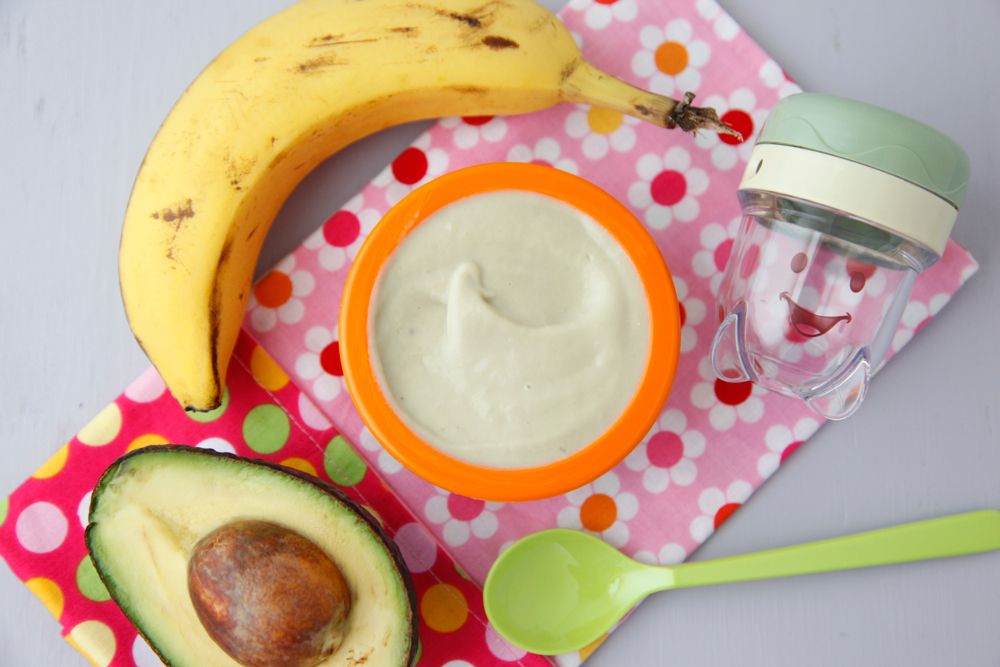
If, after purchase, it turns out that the fruit is not ripe, it should not be used as food for babies yet. The melon should be placed somewhere on a shelf or hung in a room with relatively high humidity and a temperature of at least 0 degrees. Ripe fruit, even if not cut, must be stored in the refrigerator. In heat, a ripe melon begins to ripen very quickly and in a short time (3-4 days) can become overripe, begin to rot, deteriorate. nine0003
The cut melon must be stored in a special container in the refrigerator. If you leave it at room temperature, it will spoil in a day. In proper conditions, it can lie up to 7 days. It is best to cut the melon into pieces and freeze, so it is stored the longest, until the new season.
In winter, it remains to carefully remove it from the freezer compartment, let it thaw slowly in the refrigerator. Then mash with a fork or chop with a blender, and the puree is ready. It can be added to cereals, mixed with other fruit or berry mass, and prepared melon puree soup.

